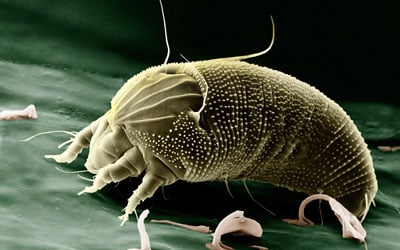Earlier in the year, I joined colleagues from Bangor University and Reading University in applying for a Newton Fund Researcher Links grant from the British Council to deliver a workshop in Mexico in September aimed at fostering Anglo-Mexican collaborations. In late August, we heard that the application had been successful, and suddenly, we were off to sunny Mexico!
The workshop was about Forensic Taphonomy, combined with the (I think) relatively unknown discipline of Forensic Acarology. What is forensic acarology? You'd not be the only one asking. Acarology is the science of microscopic mites and macroscopic mites including ticks. Every single person is home to millions of mites - they live in the pores of our skin, in our hair, including our eyelashes, eyebrows and pubes. They live in our houses, share our beds and bathrooms.

Apparently the populations of mites found are specific to different parts of the house - there will be different species living on windowsills to the rest of the room, or on your pillow or in the middle of the bed. About 10 million house dust mites (HDMs) live in the average bed.
Not surprisingly, given their diversity and specificity to certain conditions, mites can be really useful in forensic situations. Mites, like flies, are quick to colonise a corpse, but they arrive on the bodies of the flies, jump off onto the cadaver and lie in wait to predate on the newly hatched fly larvae. They reproduce more quickly than flies, so can in some instances, be more accurate for estimating time since death. Their specificity means that they can be used in a similar way to other trace evidence, such as soil, diatoms or pollen, to determine where a suspect has been, if a body has been moved, or to link a suspect to a victim or scene. However, given their tiny size and the difficulties there are in identifying them, they have not taken off as a forensic diagnostic tool. More information about the use of mites in a forensic context can be found here.
The workshop focused on introducing Mexican police, criminologists, acarologists, entomologists and anthropologists to taphonomy, decomposition in different environments, search and location techniques, and exploring the potential for cadaver dog training and creating a human taphonomy facility (otherwise known as a 'body farm') to Mexico. As you can imagine, I was rather excited about this possibility! I ran an exercise where the delegates had to plan the structure of a potential research facility, taking into consideration different requirements such as storage, security, lab spaces etc.
 |
| Delegates engaged in the exercise to design an HTF |
 |
| One of the designs |
During the week, we also undertook a practical exercise where we extracted soil mites from a site where a body (pig carcass) had been deposited.
 |
| Caroline collecting soil samples from the deposition site |
 |
| Collecting the mites from the soil samples |
All our hard work was rewarded with some down time. We happened to be there during the Mexican Independence Day celebrations. There were fireworks, parades in the streets, amazing food and music. Here is a couple dressed in traditional clothes.
And of course, when you're in Mexico, you should do as the Mexicans do...
 |
| This is Mezcal, a spirit like Tequila, complete with 'worms' (butterfly larvae/caterpillars) |
